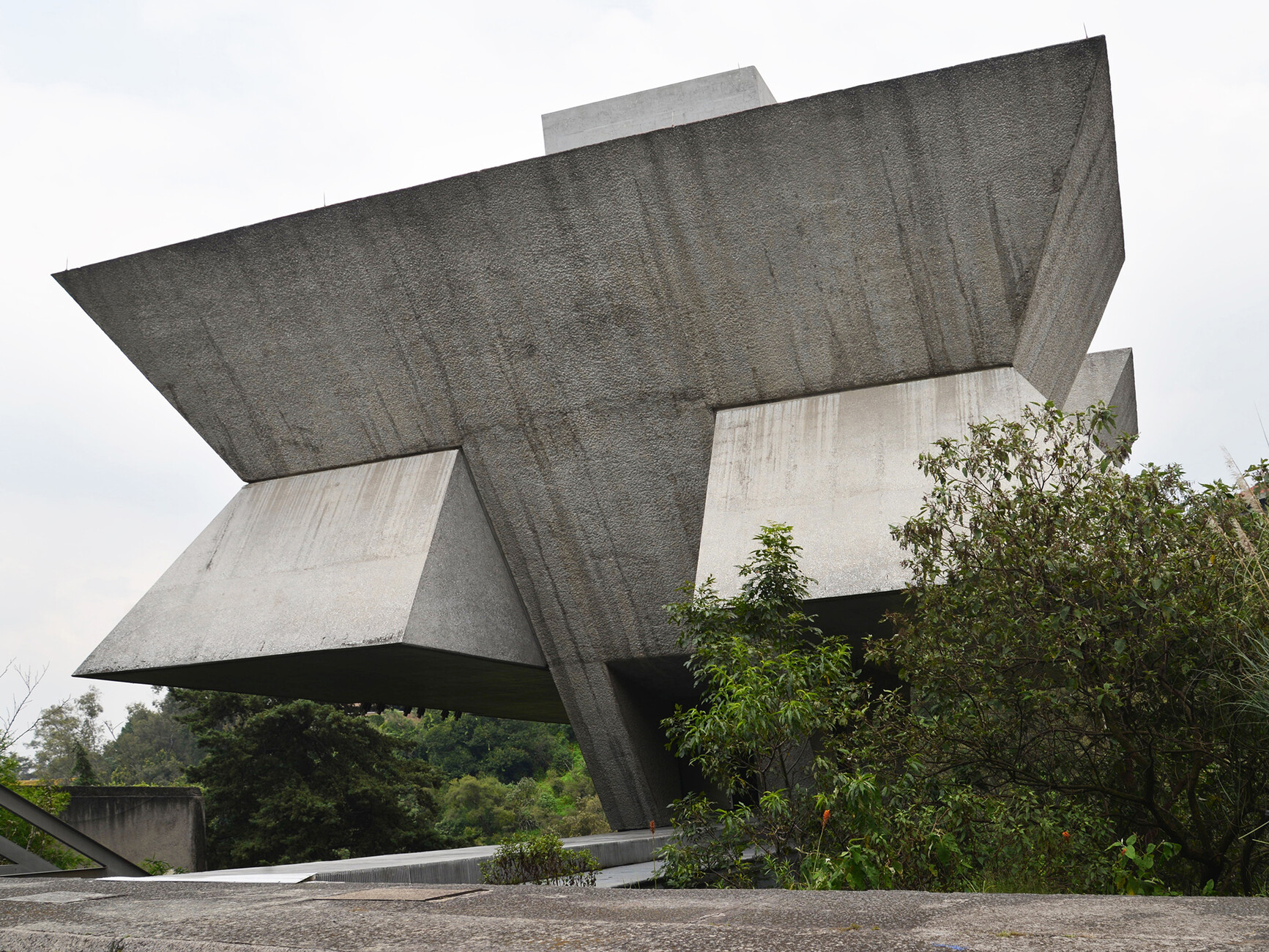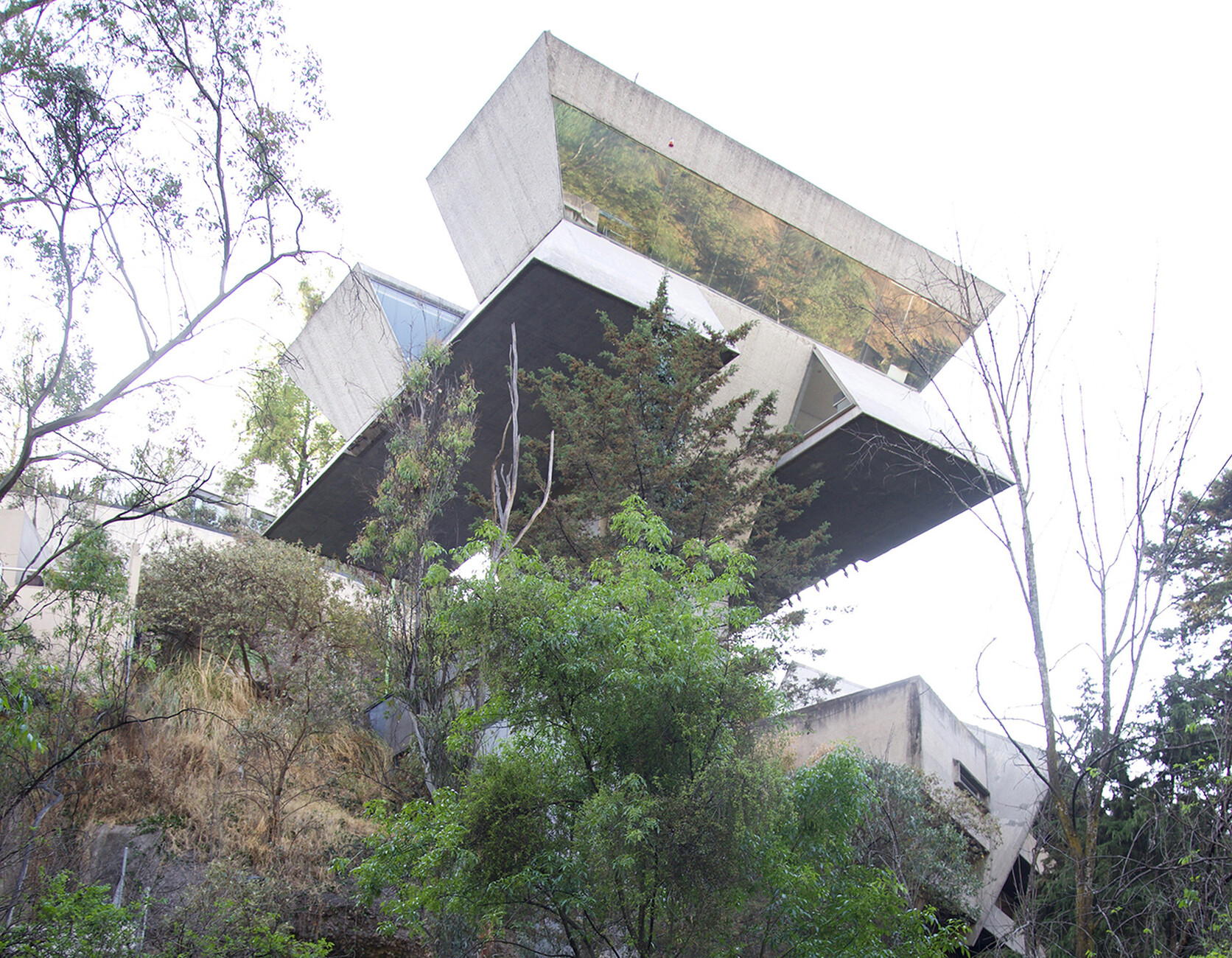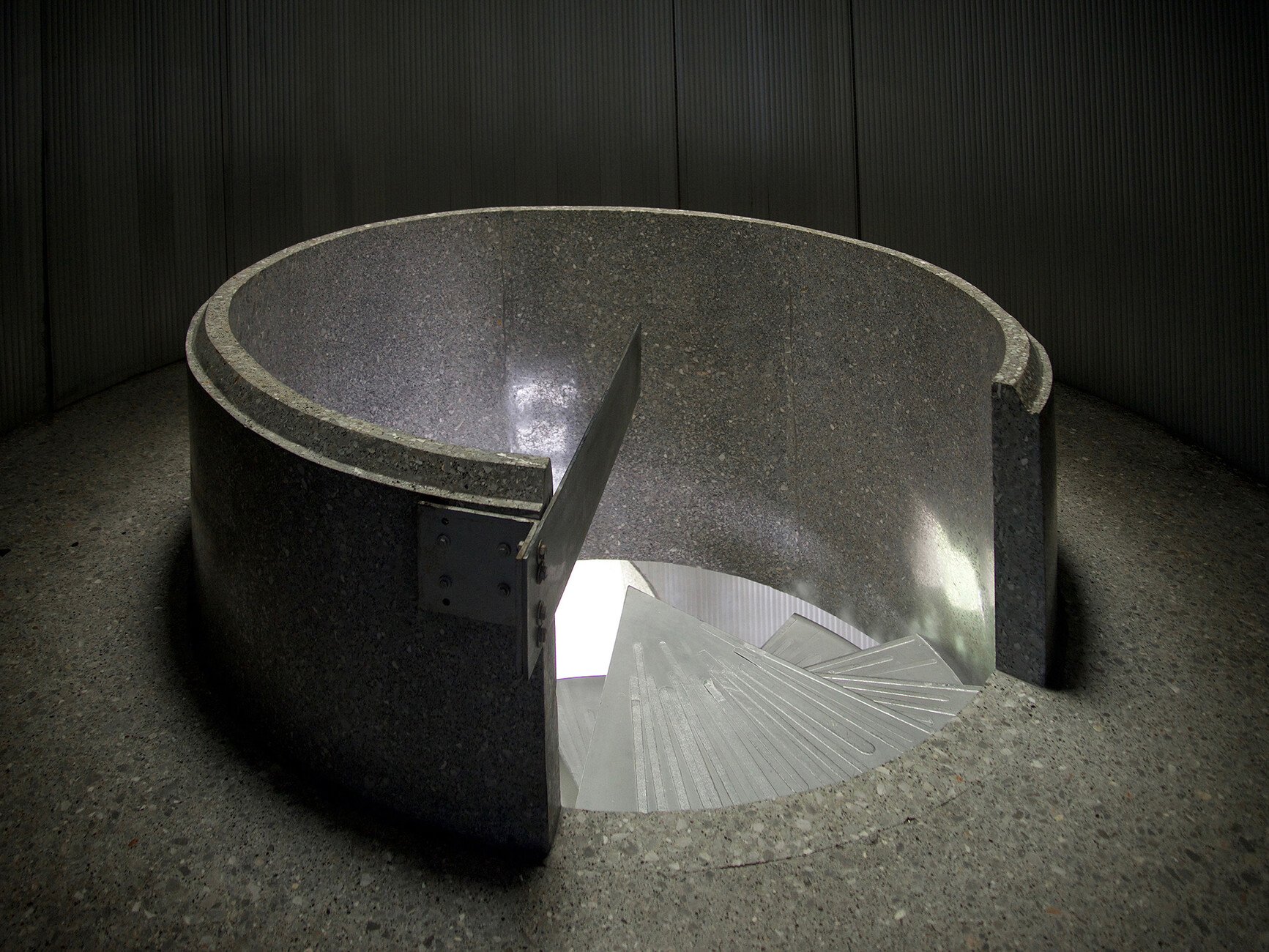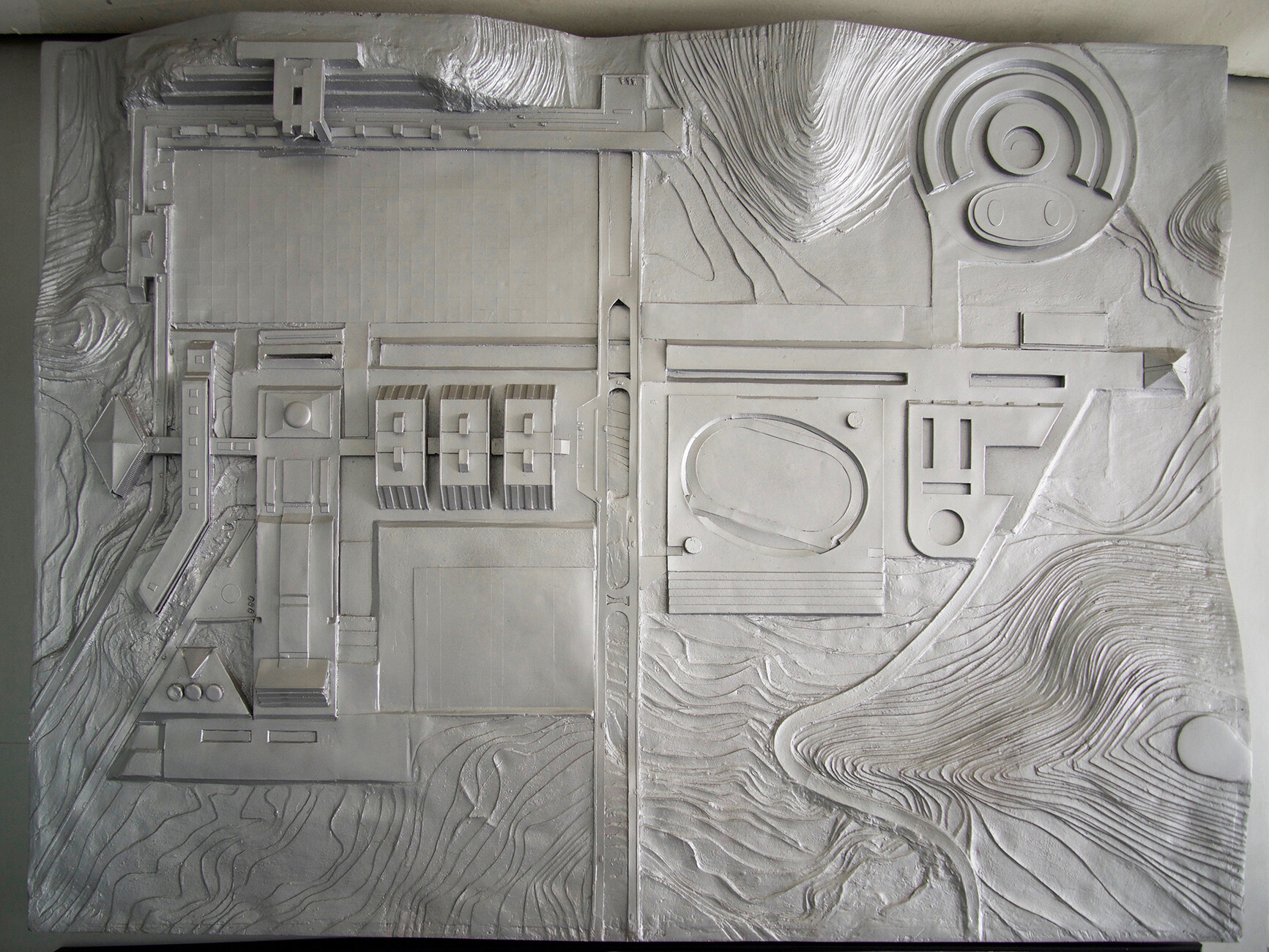Brutalist icon
When asked what inspired him to create this building, Agustín Hernández replies: “The pre-Columbian architecture of Mexico.” He speaks softly and exudes happiness. The path through the building is dramatic and accessing it is not hazard-free, as the gangplank is built without a railing and there is thus a drop of several meters either side. The metal entrance gate slides into the wall in a manner distinctly inspired by sci-fi, and then up spring-mounted steps visitors reach a cavernous room with the same concrete surfaces found on the exterior. Models that look more like sculptures than houses are scattered throughout the space. Hernández explains the architecture of a military academy with the aid of one of these. He built the facility in reference to the monumental pyramid cities of Chichén Itzá, Monte Albán and Teotihuacán. He points out how a pyramid-shaped structure forms the end point of an axis one kilometer in length. The abstract mega-structure appears at once archaic and futuristic.
He then leads us to the private area in the upper part of the building, which is fitted out with Marcel Breuer armchairs and furniture designed by Hernández himself. Here, the carpet has been laid not only on the floor but also on the walls, and a panorama window offers a view out over the greenery of the district with its villas. We are finally led through a secret door in the bedroom, further up and into a room that can be regarded as an architectural apex, seeing as it not only opens up into a roof terrace but also directly to the sky. The building is vertically pierced by a cylindrical opening at its center, allowing us to look through a glass disk that serves as a table and down at the circular staircase in the entrance hall. Like the Mayan monuments, the structure deliberately establishes a relationship with the cosmos. “Architecture is art,” says Agustín Hernandez; he defines it as a form of organization that translates the organic into geometry, in order to bring space in line with “an ideal and emotional life”.











